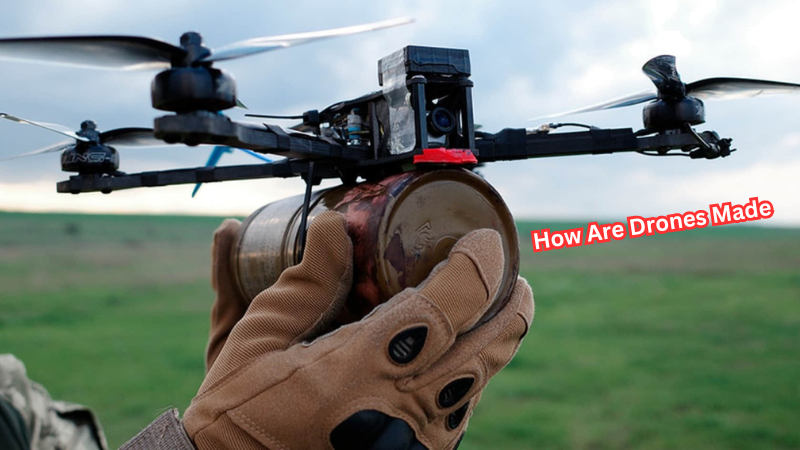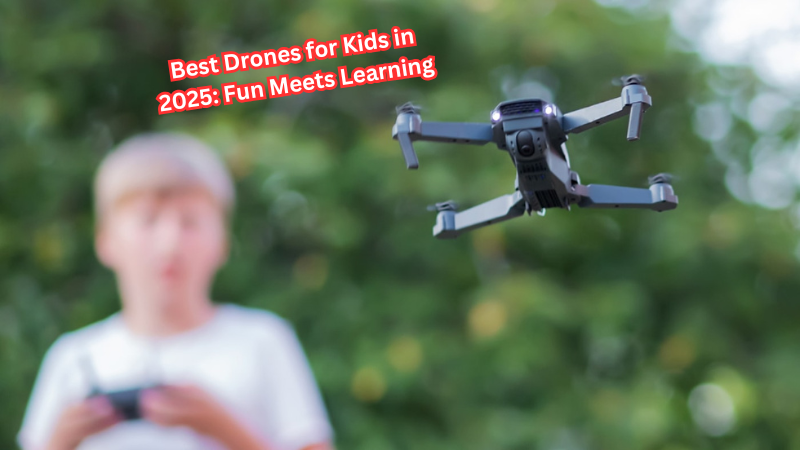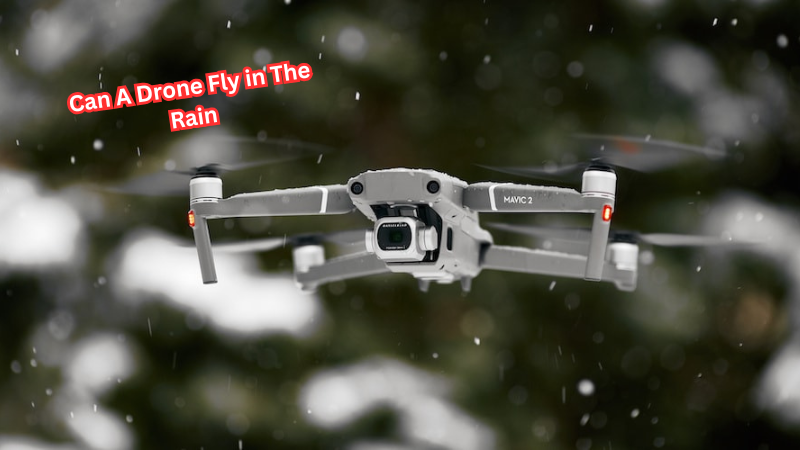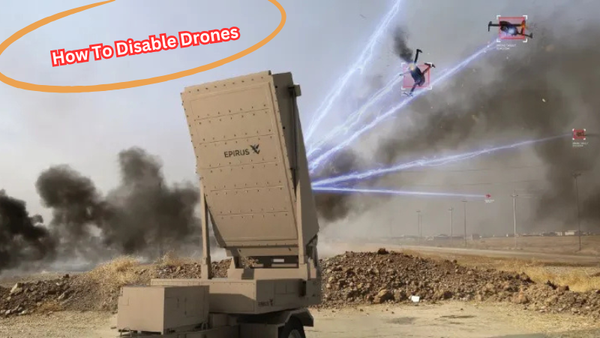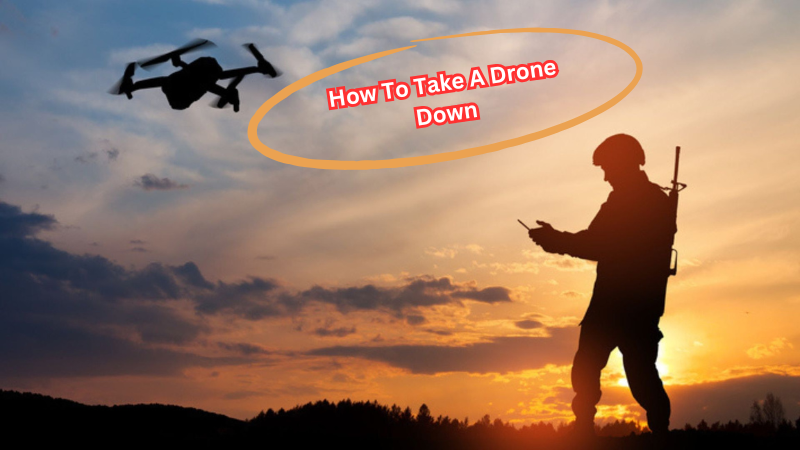Drones, also known as Unmanned Aerial Vehicles (UAVs), have revolutionized industries ranging from photography and delivery to agriculture and defense. But how are these marvels of technology made? Building a drone is a complex process that combines engineering, design, and cutting-edge technology.
It begins with careful planning and purpose-driven design, followed by the selection of key components such as frames, motors, flight controllers, and communication systems. Advanced materials like carbon fiber ensure durability, while precision electronics enable stability and control.
Assembly requires both mechanical skill and technical expertise, culminating in rigorous testing to ensure optimal performance. This intricate process reflects a blend of innovation and craftsmanship, shaping drones into powerful tools that are redefining modern possibilities.
What is a Drone?
Before delving into the process of making drones, it is important to understand what a drone is. A drone is an unmanned aircraft that can be controlled remotely or operate autonomously through pre-programmed flight plans. They come in various shapes and sizes and are equipped with different features depending on their intended use.
Also known as UAVs, drones were originally developed for military purposes but have evolved to serve numerous civilian applications. They are equipped with cameras, sensors, and other advanced technology that allow them to capture images and data, as well as perform tasks such as delivery and agriculture.
Different Types of Drones
There are various types of drones, each designed for a specific purpose. Some common types include.
- Multirotor Drones: These are the most popular type of drone and are used for photography, videography, and recreational purposes. They typically have four or more rotors that allow them to take off vertically and hover in place.
- Fixed-Wing Drones: As the name suggests, these drones have fixed wings like traditional airplanes and require a runway for takeoff and landing. They are commonly used for long-distance surveillance and mapping.
- Single-Rotor Helicopters: These drones have one large rotor and a tail rotor for control. They have greater maneuverability than multirotor drones and are used for tasks such as aerial mapping and inspection.
- Hybrid Drones: These drones combine features of both fixed-wing and multirotor designs, allowing them to take off vertically and fly long distances like a traditional airplane. They are often used for commercial purposes such as delivery.
These are just a few examples of the many types of drones that exist, each with its unique design and capabilities.
Benefits of Drones
Drones have become increasingly popular due to their numerous benefits across various industries. Some of the key advantages of using drones include:
- Cost-effective: Drones are a cost-effective option compared to traditional aircraft or manual labor for tasks such as surveillance, mapping, and delivery. They require less maintenance and can cover large areas in a shorter amount of time.
- Improved Safety: By removing the need for human pilots on board, drones can perform dangerous tasks without putting human lives at risk. This is particularly useful in industries such as search and rescue operations where access may be limited.
- Greater Efficiency: With advancements in technology, drones are becoming more efficient in performing tasks such as crop monitoring and package delivery. They can cover large distances quickly and with greater accuracy, making them a valuable tool for businesses.
- Versatility: Drones are highly versatile and can be used for a wide range of applications including photography, videography, surveying, mapping, inspections, and even medical supply delivery in remote areas.
- Environmental Benefits: By reducing the need for traditional aircraft or vehicles to perform tasks such as aerial surveys or deliveries, drones help reduce carbon emissions and promote more environmentally friendly practices.
These are just a few of the many benefits that drones offer, making them an increasingly popular choice for various industries.
How Are Drones Made
Now that we have a basic understanding of drones and their different types, let's dive into the process of making them. The manufacturing process for drones is a complex one that involves various stages and technologies, from design to testing.
Design and Planning
The first step in making a drone is coming up with a design concept that meets the specific requirements of its intended use. This involves analyzing factors such as flight time, payload capacity, control range, and environmental conditions.
Once the design concept is finalized, engineers use Computer-Aided Design (CAD) software to create detailed 3D models of the drone. This allows them to test the design virtually and make any necessary adjustments before moving on to physical production.
Selection of Components
The next step is selecting the key components that make up the drone. These include:
- Frame: The frame serves as the foundation of the drone and must be strong enough to support all other components. Common materials used for drone frames include aluminum, carbon fiber, and plastic.
- Motors: Drones use electric motors to power their propellers and provide lift. The type and size of the motor chosen depend on factors such as weight, desired flight time, and payload capacity.
- Flight Controller: This is essentially the "brain" of the drone, allowing it to receive and process commands from the pilot or follow a pre-programmed flight plan. Flight controllers also have built-in sensors such as gyroscopes and accelerometers to help stabilize the drone in flight.
- Propellers: These are responsible for creating thrust and lift, allowing the drone to move vertically and horizontally. They come in various sizes and shapes depending on the specific design of the drone.
- Battery: Drones rely on batteries to power their motors and other electronic components. The type and capacity of battery chosen depend on the flight time required by the drone.
Other components that may be included in a drone's design include cameras, sensors, GPS systems, and communication modules.
Manufacturing
Once all components have been selected, it is time for the physical production of the drone. This involves several stages, including:
- Cutting and Shaping: The frame material is cut into the desired shape using specialized tools such as CNC machines.
- Assembly: The frame and all other components are assembled according to the 3D model created in the design phase. This involves soldering wires, attaching motors and propellers, and installing electronic components.
- Testing: Once the drone is fully assembled, it undergoes multiple tests to ensure that all components are working properly. These may include flight tests as well as checks for GPS accuracy and camera functionality.
Quality Control
Before a drone can be released for sale or use, it must go through rigorous quality control measures to ensure that it meets safety and performance standards. This includes checks for structural integrity, flight stability, and electronic functionality.
Testing and Improvements
Even after a drone is released, manufacturers continue to test and improve their designs based on user feedback and advancements in technology. This allows for constant innovation and improvement in the field of drone technology.
What Are the Challenges in Drone Making
While the benefits of drones are numerous, some challenges come with making them. These challenges can range from technical difficulties to regulatory hurdles. Here are some of the most significant challenges faced by drone manufacturers:
Technical Limitations
One of the primary challenges in drone making is designing a product that can meet all technical requirements while still being cost-effective. This includes balancing factors such as weight, flight time, payload capacity, and control range. As technology continues to advance, however, these limitations are becoming less of an issue.
Another significant challenge is ensuring safety and reliability in drone design. Drones operate in various environments and conditions, and their components must be durable enough to withstand these conditions. This requires extensive testing and constant improvements to ensure that drones can operate safely and efficiently.
Regulatory Hurdles
As the use of drones continues to grow, so does the need for regulations surrounding their operation. Manufacturers must adhere to strict regulations set by aviation authorities in different countries, which may include restrictions on flight heights, locations, and permitted activities.
These regulations not only pose challenges for manufacturers but also for users who must comply with them when operating their drones. Failure to do so can result in penalties or even criminal charges.
Limited Battery Life
One of the biggest limitations of current drone technology is battery life. Most consumer-level drones have a flight time of around 20-30 minutes, while commercial and industrial drones may have longer flight times but are also more expensive. This limited battery life makes it challenging to use drones for extended periods, especially in industries such as agriculture or surveying where long flight times are necessary.
Skill Requirements
The manufacturing process of drones requires a high level of skill and expertise from engineers and technicians. The design, assembly, and testing of components all require specialized knowledge and training. As the demand for drones grows, there is a need for more skilled professionals to enter the industry.
Cost
Building a drone can be an expensive undertaking, especially for smaller companies or individuals looking to create custom designs. The cost of materials, components, and equipment used in the manufacturing process can add up quickly, making it difficult for some to enter the market.
Competition
The growing popularity of drones has led to an increase in competition among manufacturers. This means that companies must constantly innovate and improve their products to stay ahead of competitors. The rise of low-cost drone options from countries like China has also put pressure on established manufacturers to lower their prices while maintaining quality.
Public Perception
While drones have a wide range of uses and benefits, they are often met with skepticism or even fear from the public. This is due to concerns about privacy, safety, and potential misuse of drones. As a result, manufacturers must work towards building trust and educating the public about the responsible use of drones.
These challenges may seem daunting, but they also present opportunities for growth and improvement in the drone industry. As technology continues to advance and regulations become more refined, manufacturers will be able to overcome these challenges and continue pushing the boundaries of what drones can do.
Avoid These 5 Common Mistakes When Making Drones
When it comes to making drones, there are several common mistakes that manufacturers should avoid. These include:
- Rushing the Design Phase: Taking the time to thoroughly design and plan a drone's components can prevent costly errors and delays later on.
- Skipping Quality Control Measures: Failing to properly test and ensure the quality of a drone can lead to safety hazards and damage to both the product and its reputation.
- Ignoring Regulatory Requirements: Non-compliance with regulations can result in legal consequences, so manufacturers need to stay updated on any changes or requirements.
- Cutting Corners on Materials or Components: Using low-quality materials or components can compromise the drone's performance and durability, leading to potential safety risks.
- Neglecting User Feedback: Gathering feedback from users and implementing improvements based on their suggestions is crucial for continued growth and success in the industry.
By avoiding these mistakes, manufacturers can produce high-quality, safe, and innovative drones that meet regulatory requirements and satisfy user needs.
Does Certification Matter in Drone Making?
The short answer is yes. Certification plays a significant role in the drone industry, both for manufacturers and users. Certifications are issued by aviation authorities and indicate that a particular drone model has met certain standards and regulations.
For manufacturers, certification is necessary to legally sell their products in various markets. It also ensures that drones meet safety requirements and can be operated responsibly.
For users, choosing a certified drone can provide peace of mind knowing that it has undergone rigorous testing and meets safety standards. It may also be required for certain applications, such as commercial use or flying in restricted airspace.
Obtaining certifications can be a lengthy and expensive process for manufacturers, but it ultimately benefits the industry as a whole by promoting safety, reliability, and responsible drone use. Overall, certification is an essential aspect of the drone manufacturing process that should not be overlooked.
Future of Drone Manufacturing
Despite the challenges and mistakes that come with making drones, the future looks bright for this rapidly evolving industry. With advancements in technology and increased demand from various sectors such as delivery, transportation, and entertainment, there is no doubt that drones will continue to play a significant role in our society.
Some potential future developments in drone manufacturing include:
- Longer Flight Times: With advancements in battery technology, we can expect to see longer flight times and increased efficiency in drones.
- Autonomous Features: The integration of artificial intelligence and machine learning could lead to more autonomous capabilities for drones, making them smarter and more efficient.
- Improved Design and Materials: As materials science continues to advance, manufacturers may be able to create lighter, stronger, and more flexible drone designs for improved performance.
- Expanded Applications: Drones are already being used in many industries, but we can expect to see even more diverse applications as technology and regulations continue to evolve.
With these exciting possibilities on the horizon, it is clear that drone manufacturing will play a significant role in shaping our future. By addressing challenges, avoiding common mistakes, and staying at the forefront of technological advancements, manufacturers can continue to push the boundaries of what drones can do and revolutionize various industries.
FAQs
How are drones constructed using modern materials?
Most consumer drones are built using lightweight materials like carbon fiber composites for strength and durability. These materials help unmanned aerial systems remain lightweight while supporting essential components like drone motors and drone propellers.
What role does a drone flight controller play in unmanned aerial systems?
The drone flight controller is the brain of an unmanned aircraft system. It processes data from sensors and coordinates with electronic speed controllers to ensure stable flight. This is key for UAV technology, allowing drones to fly autonomously or under user control.
Can I build my own drone using additive manufacturing?
Yes, additive manufacturing, such as 3D printing, enables you to create parts for your own drone. You can customize the design using UAV technology, assemble drone motors, and fit drone propellers, all while keeping components aligned with the standards in the drone market.
How do drones achieve autonomous flight?
To fly autonomously, drones rely on advanced UAV technology, which includes a combination of drone motors, electronic speed controllers, and GPS. These tools, managed via a drone flight controller, allow unmanned aircraft systems to follow programmed paths without manual input.
Conclusion
Creating drones involves navigating a variety of challenges, from overcoming technological limitations like improving battery life and flight efficiency to addressing strict regulatory requirements for safety and airspace usage.
Cost constraints also weigh heavily, as manufacturers must balance affordability with advanced features, all while ensuring durability and performance. Additionally, staying ahead in a competitive market demands constant innovation and adaptation to new applications and consumer needs.
Addressing these challenges is crucial for unlocking drones' full potential, enabling them to enhance industries like delivery, agriculture, and emergency response. With ongoing advancements in technology and collaborative solutions, the future of drone innovation promises exciting developments that will revolutionize their capabilities and expand their impact around the globe.
